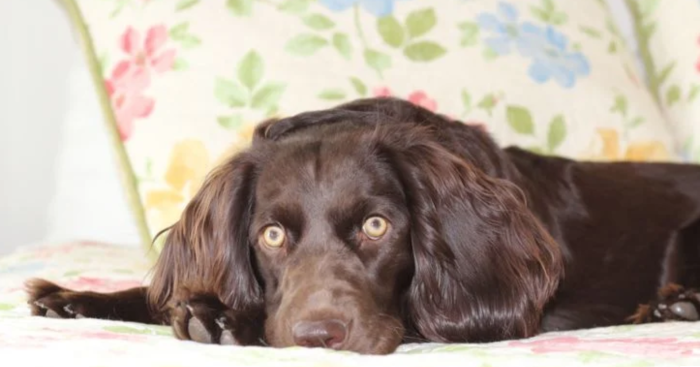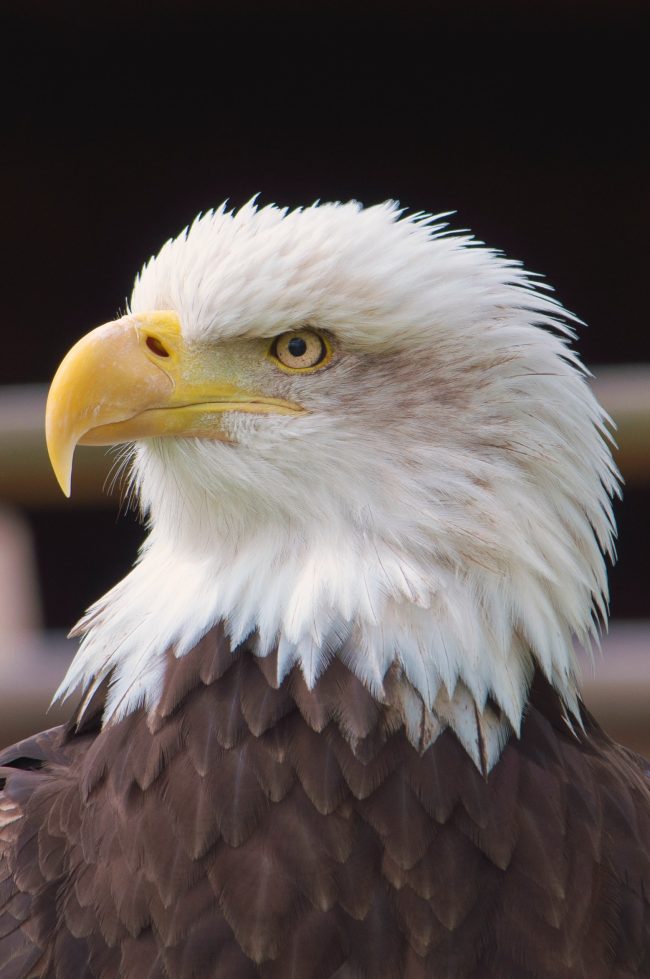
There are many AKC breed standards in which yellow eyes are a disqualification: They include the Briard, Berger Picard, Mudik (if they’re black), Beauceron, American Water Spaniel, Belgian Tervuren, Dutch Shepherd, and Cane Corso.
In some other breed standards, yellow eyes are a serious or major fault: The Finnish Lapphund, Boerboel, Redbone Coonhound, Treeing Walker Coonhound, Soft Coated Wheaten Terrier, Wirehaired Vizsla, Nederlandse Kooikerhondje, German Shorthaired Pointer, Airedale Terrier, Parson Russell Terrier, and Rottweiler.
And then there are standards that describe yellow eyes as objectionable, most undesirable, or to be strongly/heavily penalized: The Old English Sheepdog, Labrador Retriever, Cairn Terrier, Welsh Springer Spaniel, Black and Tan Coonhound, Irish Terrier, Bouvier des Flandres, Cirneco Dell’Etna, Smooth Fox Terrier, Whippet, Kerry Blue Terrier, Curly-Coated Retriever (which specifies “harsh yellow eyes”), Flat-Coated Retriever, German Wirehaired Pointer, English Springer Spaniel, and Wire Fox Terrier.
There some standards define yellow eyes more descriptively, and the image below gives you a hint:

Photo by James Newcombe on Unsplash
Give yourself a pat on the back if you identified this description as “Bird of Prey” or “hawk” eyes.
Fewer than a handful of breed standards include those highly descriptive terms. The Entlebucher Mountain Dog, Small Munsterlander, Cane Corso and Polish Lowland Sheepdog, in which yellow eyes are serere faults, if not disqualifications, all mention either “Bird of Prey” or “hawk” eyes.
But why are yellow eyes a bad thing?
In some breeds, especially herding breeds or those that work around stock (see below), yellow eyes can spook livestock which, understandably, make sheep, for instance, sense that they or their lambs are about to become dinner. In other breeds, yellow eyes can impart a harsh outlook when breed type may call for a softer expression.
All this said, yellow eyes are appropriate in many other breeds and we mention them below followed by the description from their AKC standards:
Harrier: Eyes are medium size, set well apart, brown or hazel color in darker dogs, lighter hazel to yellow in lighter dogs, though darker colors are always desired.
Bloodhound: The eyes correspond with the general tone of color of the animal, varying from deep hazel to yellow.
Chesapeake Bay Retriever – Distinctive features include eyes that are very clear, of yellowish or amber hue
Wirehaired Pointing Griffon – Eye color ranges in all shades of yellow and brown.
Boykin Spaniel – Eyes range from yellow to amber to varying shades of brown
image: Boykin Spaniel/Shutterstock

Quick correction. Yellow eyes are not a DQ in the Belgian Tervuren standard. The standard say the eyes are to be dark brown so yellow eyes would be “1. The extent to which it
deviates from the standard. 2. The extent to which such deviation would actually affect the
working ability of the dog.”
Thanks!